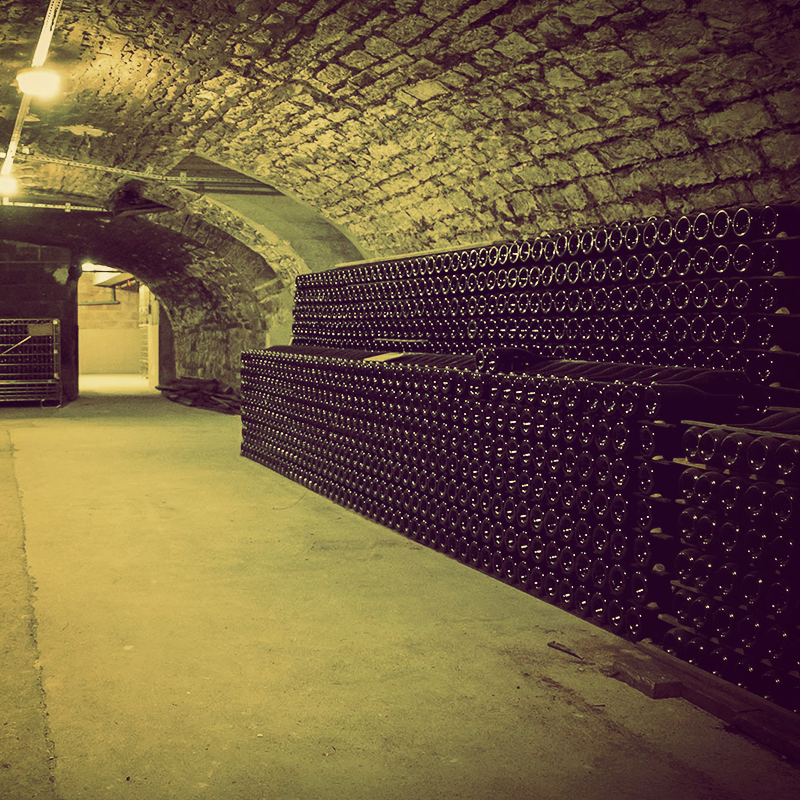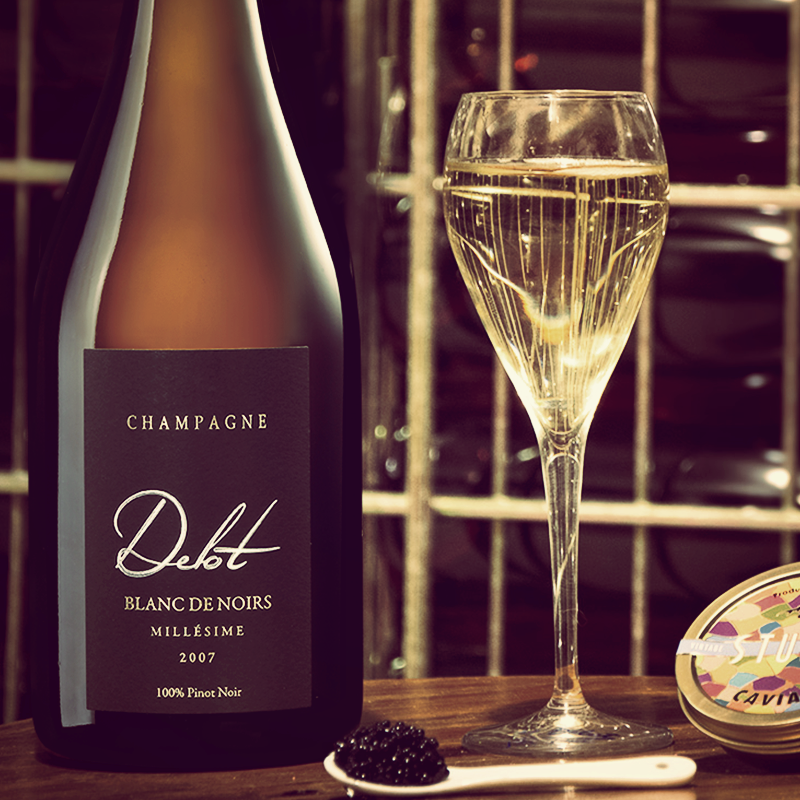HOW TO STORE CHAMPAGNE ?
Champagne with its unique alchemy is not a wine like the others, you will already know that, but do you know how to store it?
Your favourite vintage has aged slowly in our cellars. During this period, because of its high internal pressure (above 5 bars), your bottle was topped with an airtight iron cap.
It is only a few months before the sale that we remove this capsule to replace it with a cork. This will then let the champagne breathe to bring it to perfect maturity.
The time between the cork stop and the sale is cleverly calculated. It will offer you a sufficiently mature champagne, whilst allowing sufficient storage (2 years).

We will explain some basic rules to you for storing champagne.
Unlike still wine, you will not gain anything by aging champagne in your cellar. At best you will not lose anything. At worst, because of the pressure, the porous cork will gradually let out the gas, making your champagne less sparkling. If the deviation continues, your champagne will begin to oxidize by becoming yellowish and developing very particular animal aromas often unpleasant to taste.
The cork component of your cap has well-known porous characteristics, designed to let a tiny amount of air pass. These sealed features change quickly in case of poor conservation. Do not leave your champagne bottles standing (even for a short time). The cork then dries quickly and becomes less watertight.
It is also not recommended to store your champagne bottles near a heat source (even for a short time). The excessive increase of the internal pressure can not be retained by the stopper.
In both cases, the cork will become less waterproof, letting gas escape while oxidizing the champagne that will quickly become undrinkable.
For optimal storage conditions, it is recommended to have a constant temperature between 10 and 16 degrees, protected from light with a high hygrometry but not excessive, between 60 and 80%.
Light is to be avoided for special reasons. Transparent glass, in the medium term, can sometimes show "tastes of lights", relatively unpleasant, recalling the smell of cauliflower.
HOW TO SERVE CHAMPAGNE?
King of wines and wine of kings, champagne can not be allowed to go without some basic rules.
First of all, you have certainly noticed that it is more pleasant to taste fresh champagne, to even "chilled”. Be aware however that the serving temperature of your favourite Champagne is proportionally inverse to the aromas it will develop on the nose and palate.
It is interesting to know how to cool the Champagne according to its characteristics and what is expected from the tasting.
Friends turning up unexpectedly? We will then choose a light vintage like the Grande Réserve or the Montre-cul vintage that we will pop in a bucket of ice or that we can put directly in the freezer! Some rumours mention the degradation of Champagne when it is put in the freezer. If you don’t let it get icy, that won’t happen!
In both cases, you will refine your cooling time with a suitable thermometer and some practice, but generally, know that the optimal cooling time is between 20 and 30 minutes.
You will then taste a chilled Champagne, a very pleasant feeling, the extreme freshness mitigates all the aromas, your tasting is then easy and refreshing. This is the best way to enjoy Champagne throughout the evening.
Do you want an optimum moment of tasting? Then choose a bottle of the Prestige vintage, which you will have left in your refrigerator for half a day. This will then reach the temperature of 6-8 degrees. An ideal middle between ease of tasting, pleasure of sensations and aromatic expression.
Finally, if you want to fully discover the aromatic complexity of a vintage, with the intention of feeling and savouring the slightest structural arcana, you must serve the Champagne at a temperature of 10° minimum. Can even be at cellar room temperature for the more knowledgeable. This method of tasting is highly recommended for our most subtle vintages, such as the Orée du Bois or the Légende vintage. It is however valid for all the others. At this temperature, all the aromas are liberated and you will be able to fully appreciate the winemaking work done within the DELOT estate.

In summary, for the serving temperature:
> chilled with ice or in a freezer to highlight the inimitable sensation of lightness and freshness in the mouth of your Champagne. Best for entry-level vintages.
> At refrigerator temperature (over half a day) for the best flavours/lightness compromise. Ideal for medium to strong wines such as Prestige, Millésimé or Rosé.
> At high temperature (> 10°), ideal for vintages like the Légende or the Orée du Bois vintage. Or to fully savour all the other vintages.
You have refreshed your bottle perfectly according to your objectives? Perfect! We must now take the greatest care in choosing your glass.
We will naturally favour containers of a modest size (between 8 and 12cl). With a large glass, the temperature will increase quickly before you can finish your glass, which can become unpleasant. In the case of a larger glass, consider refreshing your glass regularly with champagne from the bottle.
The choice of the shape of the glass will also be important. A coupe with a very open angle, will present a very large area of exchange between the Champagne and the air, which will quickly degas your precious nectar. Despite its flattering appearance, this type of glass is strongly unadvised.
The flute has two advantages. That of seeing the size and rise of the bubbles, and its small opening at the top that keeps the gas in.
The perfect glass for tasting remains INAO. Despite its unflattering appearance, it has the advantage of moderate oxygenation of the wine, while concentrating the aromas at its summit by its rounded shape.
It should be noted that certain coupes, type "aroma'up", combine the visual advantage of the flute and the characteristics of the INAO glass by presenting an intermediate form.